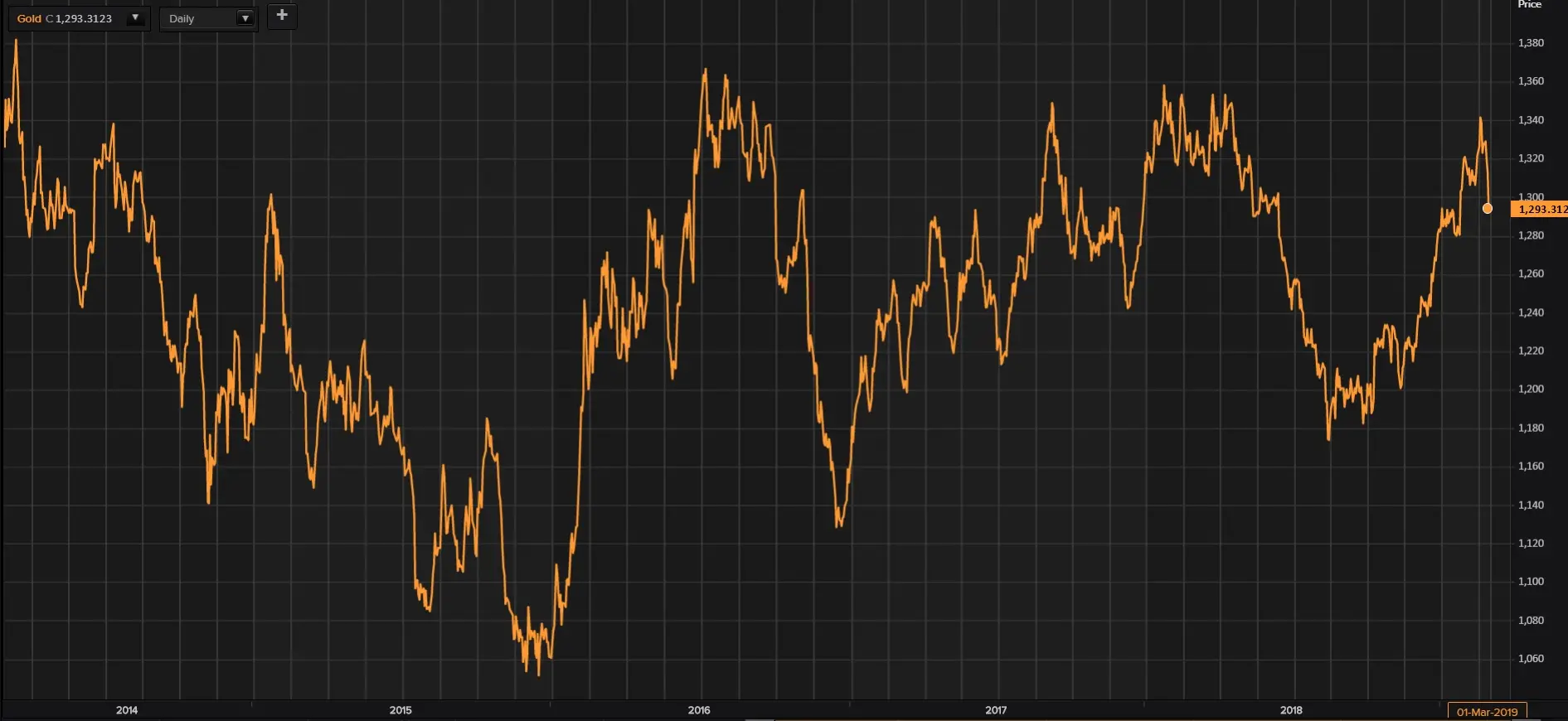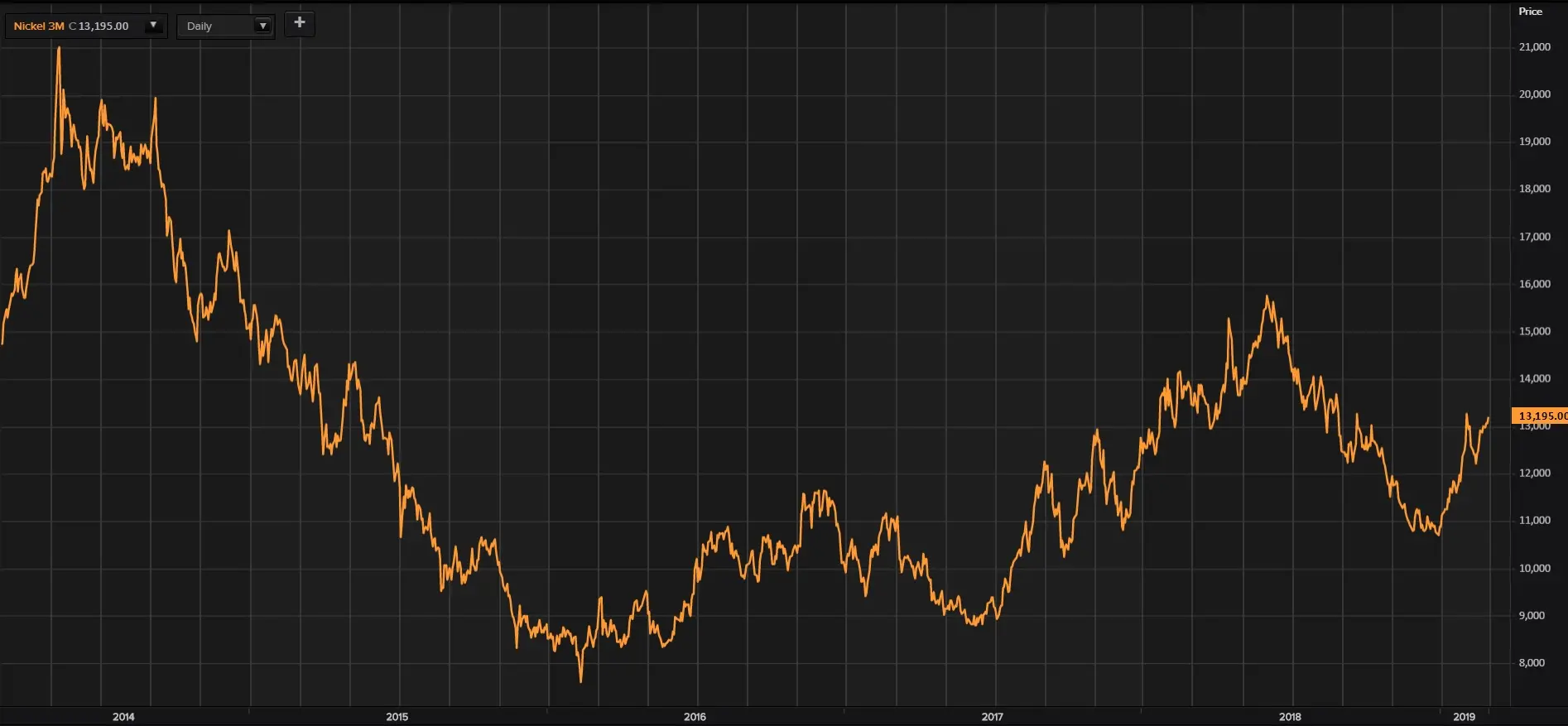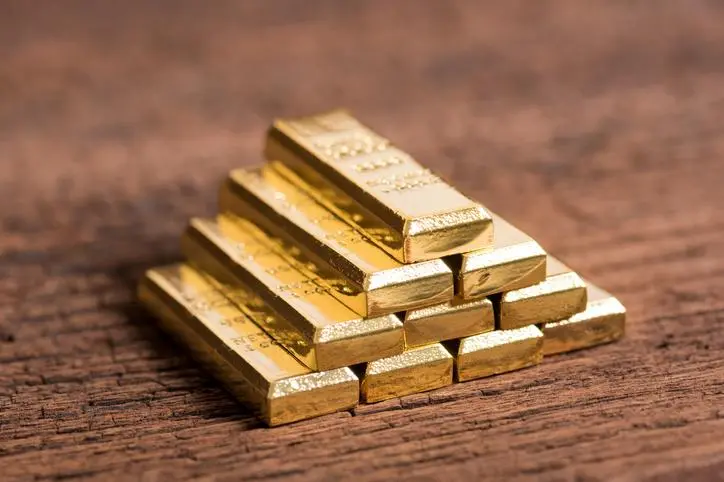PHOTO
Although the prospects of the world’s two biggest economies ramping up tariffs on each other’s goods was postponed last week, the lack of a meaningful, long-lasting trade agreement between the United States and China could mean that that there is still some life left in the recent bull-run in precious metals.
Although spot gold prices have dropped by around $50 within the past fortnight and are now back below the $1,300 per troy ounce level, they've still made a substantial recovery over the last six months, given that the yellow metal was trading below $1,190 per troy ounce at the beginning of October last year, according to Eikon data.
Speaking on a panel debate discussing the outlook for metals at the Richcomm Global Commodity Outlook Conference in Dubai last month, Dilshad Khan, head of trading at Dubai-based Dijllah Gold, said “geopolitical uncertainty is fundamentally supporting gold and silver simultaneously".
He added that if Britain heads for a 'no-deal' exit from the European Community later this month ( withdrawal is currently due on March 29), this could “create turmoil” on global markets lasting well into the second quarter.
Certainly, the volatility on global markets during the past few months of 2018 has been supportive of gold price increases, as has been the market's interpretation of announcements from the U.S. Federal Reserve (Fed) that its programme of interest rate rises, and its policy of quantitative tightening, could be placed on hold.
Watching with interest
"Sentiments are changing from a Fed perspective and they are not very much (as) hawkish as they were," Khan said. "Everybody was expecting two rate hikes this year, but I would not be surprised if there is a rate cut."
The panel's moderator, Gerhard Schubert, the founder of Dubai-based Schubert Commodities Consultancy, pointed out that there were other fundamental factors behind gold’s recent rally, such as the strong levels of buying from central banks.
A recent World Gold Council report pointed out that the world's central banks bought 651.5 tonnes of gold last year - a 74 percent year-on-year increase and the highest level of net purchases since the ending of the Bretton Woods agreement that broke the link between gold reserves and currencies in 1971. Russia, Turkey and Kazakhstan were all major buyers, and the Chinese government officially began buying gold in December 2018 after a hiatus of more than two years, the WGC report said.


Five-year spot gold price (Source: Eikon)
Click image to enlarge
Schubert said that although gold in the region of around $1,300 is still well below the $1,925 high it hit in September 2011, gold had “last year made new, all-time highs against 72 currencies”, which he said was more a result of weakness in many emerging market currencies last year.
Harish Pawani, managing director of Bin Sabt Jewellery, pointed out that in many emerging markets, capital controls prevent many people from trading in their own, weakening currencies for U.S. dollars, euros, or other major currencies.
“Take India, for example. You cannot participate in the dollar-rupee because there are foreign exchange controls - the capital convertibility is not there,” he said.
However, he added that gold buying often goes up when there is a run on the rupee against the U.S. dollar.
“In effect, what they are doing is they are actually trading in (the foreign exchange) FX market by way of a proxy.”
Silver generally performs in line with gold, albeit climbing higher on bull runs and falling faster in bearish markets, but other precious metals like platinum and palladium have been diversifying. In a rolling period 12-month period to March 1, palladium prices jumped 56 percent to just over $1,543 per troy ounce, while platinum prices have fallen by 11 percent to $858.74, according to Eikon data.
This difference of almost $700 between the two metals is "a phenomenon that has only recently occurred", Schubert said, and is driven by the fact that the former is primarily used in cars with petrol engines, while the latter is more popular in diesel engines. These are becoming less popular as more stringent emissions standards are being imposed in many European cities, which make diesel-powered cars more expensive to run.
Chinese conundrum
In terms of base metals, economic uncertainty - particularly in China - has driven down both the rate of production and the potential demand for aluminium. Emirates NBD said in a note published last week that it had reduced its average price target for aluminium this year to $1,900 per tonne, compared to $2,150 previously. It also said monthly production in China only edged up by 1.6 percent last year, compared to 10 percent in 2017.
Despite this, Salam Al Sharif, chairman of the Dubai-based Sharif Group, remains upbeat on the market’s prospects for the year ahead. Although demand has slowed in China as trade tensions with the United States have threatened exports, he said “there've been a lot of opportunities in the Asian market where they've taken up the tab and there's been a lot of diversions related to those metals”.
He predicted a “cautiously bullish” demand for metals, not least from the Middle East.
“There's a lot of countries that have been completely on the verge of destruction and now it's time to have them be reconstructed again,” he argued. “For that, there will be thousands and thousands of tonnes of metal that will be in demand - for aluminium and copper.”
Sandeep Shishodia, managing director of Ajman-based Sun Metal Group, said that market conditions are tough.
“I have been producing secondary alloys for the last 20 years. I have seen for the last six months it has been the most difficult time for us to sell our metals. Definitely, the demand was less, but as the year has started this year, demand has started picking up,” he said.
Nickel is back
In terms of individual metals, he said that nickel prices have enjoyed a recent resurgence. Since the start of the year, nickel prices have jumped more than 20 percent to $13,195 per tonne, according to Eikon data, but it is only now returning to the level it was trading at 12 months ago after witnessing a fairly steep decline in the second half of 2018. Shishodia said that he believes demand "should be on the upside" for the metal this year, especially given its use in electronic vehicles.
For zinc, however, he expects the market to remain flat in 2019.
"Zinc is an overrun market. It had the best run it's had in 2017 - it went up by almost 85-90 percent. It had a good correction in 2018. I don't see it going up too much this year."
Finally, Shishodia said he expects demand for lead to be "slightly on the lower side". Market data shows trading for the metal to have been range-bound over the past five years - between $1,600 and $2,600 per tonne, but once again the growth in prominence of electric vehicles means "demand for lead-based batteries is decreasing by the day - not in absolute terms but in percentage terms".
“Demand for lead should be slightly on the lower side,” he said.


Click image to enlarge
(Reportng by Michael Fahy; Editing by Mily Chakrabarty)
Our Standards: The Thomson Reuters Trust Principles
Disclaimer: This article is provided for informational purposes only. The content does not provide tax, legal or investment advice or opinion regarding the suitability, value or profitability of any particular security, portfolio or investment strategy. Read our full disclaimer policy here.
© ZAWYA 2019












